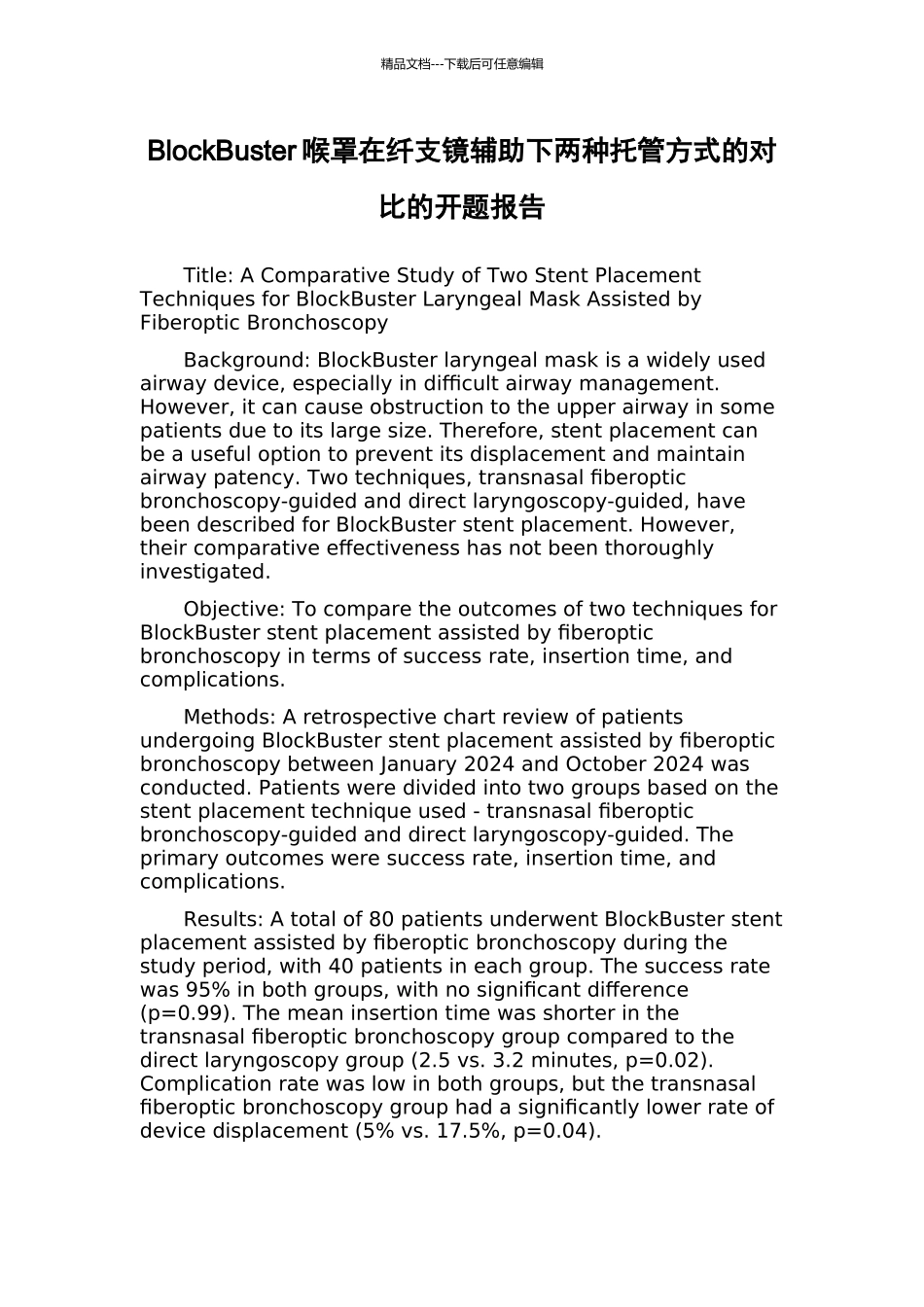精品文档---下载后可任意编辑BlockBuster 喉罩在纤支镜辅助下两种托管方式的对比的开题报告Title: A Comparative Study of Two Stent Placement Techniques for BlockBuster Laryngeal Mask Assisted by Fiberoptic BronchoscopyBackground: BlockBuster laryngeal mask is a widely used airway device, especially in difficult airway management. However, it can cause obstruction to the upper airway in some patients due to its large size. Therefore, stent placement can be a useful option to prevent its displacement and maintain airway patency. Two techniques, transnasal fiberoptic bronchoscopy-guided and direct laryngoscopy-guided, have been described for BlockBuster stent placement. However, their comparative effectiveness has not been thoroughly investigated.Objective: To compare the outcomes of two techniques for BlockBuster stent placement assisted by fiberoptic bronchoscopy in terms of success rate, insertion time, and complications.Methods: A retrospective chart review of patients undergoing BlockBuster stent placement assisted by fiberoptic bronchoscopy between January 2024 and October 2024 was conducted. Patients were divided into two groups based on the stent placement technique used - transnasal fiberoptic bronchoscopy-guided and direct laryngoscopy-guided. The primary outcomes were success rate, insertion time, and complications.Results: A total of 80 patients underwent BlockBuster stent placement assisted by fiberoptic bronchoscopy during the study period, with 40 patients in each group. The success rate was 95% in both groups, with no significant difference (p=0.99). The mean insertion time was shorter in the transnasal fiberoptic bronchoscopy group compared to the direct laryngoscopy group (2.5 vs. 3.2 minutes, p=0.02). Complication rate was low in both groups, but the transnasal fiberoptic bronchoscopy group had a significantly lower rate of device displacement (5% vs. 17.5%, p=0.04).精品文档---下载后可任意编辑Conclusion: In this study, transnasal fiberoptic bronchoscopy-guided BlockBuster stent placement was associated with a shorter insertion time and a lower device displacement rate than direct laryngoscopy-guided placement. Both techniques had a high success rate and a low complication rate. Further prospective studies are needed to validate these findings.

